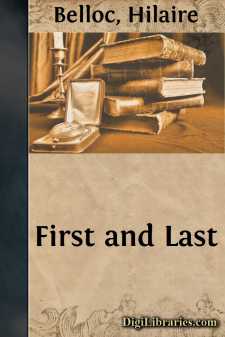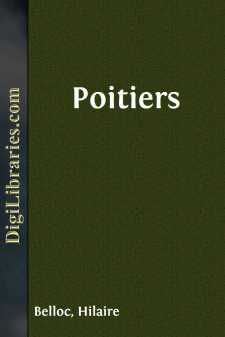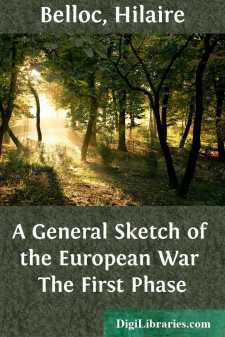Categories
- Antiques & Collectibles 13
- Architecture 36
- Art 48
- Bibles 22
- Biography & Autobiography 813
- Body, Mind & Spirit 141
- Business & Economics 28
- Children's Books 12
- Children's Fiction 9
- Computers 4
- Cooking 94
- Crafts & Hobbies 4
- Drama 346
- Education 46
- Family & Relationships 57
- Fiction 11826
- Games 19
- Gardening 17
- Health & Fitness 34
- History 1377
- House & Home 1
- Humor 147
- Juvenile Fiction 1873
- Juvenile Nonfiction 202
- Language Arts & Disciplines 88
- Law 16
- Literary Collections 686
- Literary Criticism 179
- Mathematics 13
- Medical 41
- Music 40
- Nature 179
- Non-Classifiable 1768
- Performing Arts 7
- Periodicals 1453
- Philosophy 64
- Photography 2
- Poetry 896
- Political Science 203
- Psychology 42
- Reference 154
- Religion 513
- Science 126
- Self-Help 83
- Social Science 81
- Sports & Recreation 34
- Study Aids 3
- Technology & Engineering 59
- Transportation 23
- Travel 463
- True Crime 29
Crecy
by: Hilaire Belloc
Description:
Excerpt
INTRODUCTION
Between those last precise accounts of military engagements which antiquity has left us in small number, and what may be called the modern history of war, there lies a period of many centuries—quite 1400 years—during which the details of an action and even the main features of a campaign are never given us by contemporary recorders.
Through all that vast stretch of time we are compelled, if we desire to describe with any accuracy, and at any length, the conduct of a battle, to “reconstitute” the same. In other words, we have to argue from known conditions to unknown. We have to establish by a comparison of texts and of traditions, and by other processes which will be dealt with in a moment, a number of elements which, where a modern action is concerned, numerous memoirs and official record often accompanied by elaborate maps can put clearly before us.
We should note that the line of division between what we will call a medieval battle and a modern one, though it cannot, of course, be precisely established, corresponds roughly to the sixteenth century. The battles of the seventeenth are for the most part open in detail to the historian, from copious evidence afforded by contemporary writers and by our considerable knowledge of the tactics and armament of the time. And this, of course, is still truer of the eighteenth and of the nineteenth centuries. Subsequent to the wide employment of printing, and throughout the sixteenth century, the tendency shown by contemporaries to set down detail steadily increases, but the whole of that century is transitional in this matter.
The battles of the fifteenth, of the fourteenth, and earlier centuries, differ entirely as to their evidence. We must gather it from manuscript authorities, often rare, sometimes unique. Those authorities are, again, not always contemporary. They never by any chance give us a map, and rarely a definite topographical indication. They are summary, their motive is ecclesiastical or civil rather than military, they present at the best the picturesque side of an engagement, and at the worst they preserve a bare mention of its date, or the mere fact that it took place.
Even in the elementary point of numbers, without some knowledge of which it is so difficult to judge the nature of a field, we are commonly at a loss. Where a smaller force upon the defensive has discomfited a larger attacking force, the dramatic character of such a success (and Crécy was one of them) has naturally led to an exaggeration of the disproportion. The estimate of loss is very commonly magnified and untrustworthy, for that is an element which, in the absence of exact record, both victors and vanquished inevitably tend to enlarge. We are not as a rule given the hours, sometimes, but not often, the state of the weather, and, especially in the earlier cases, the local or tactical result is of so much greater importance to the chronicler than the strategical plan, that we are left with little more knowledge at first hand than the fact that A won and B lost....












